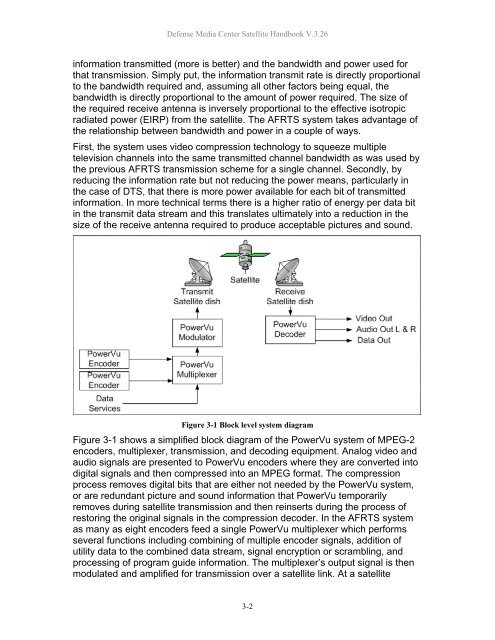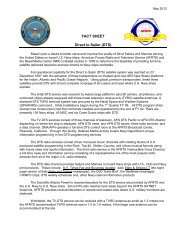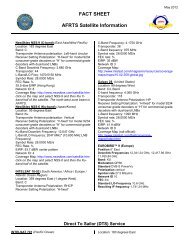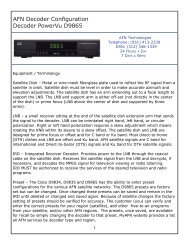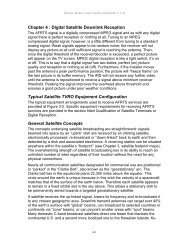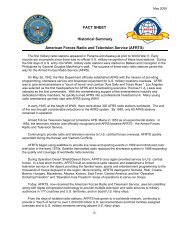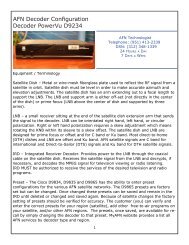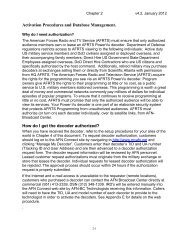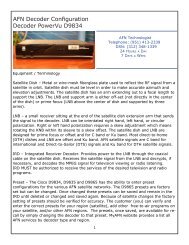AFRTS Defense Media Center Satellite Handbook
AFRTS Defense Media Center Satellite Handbook
AFRTS Defense Media Center Satellite Handbook
You also want an ePaper? Increase the reach of your titles
YUMPU automatically turns print PDFs into web optimized ePapers that Google loves.
<strong>Defense</strong> <strong>Media</strong> <strong>Center</strong> <strong>Satellite</strong> <strong>Handbook</strong> V.3.26<br />
information transmitted (more is better) and the bandwidth and power used for<br />
that transmission. Simply put, the information transmit rate is directly proportional<br />
to the bandwidth required and, assuming all other factors being equal, the<br />
bandwidth is directly proportional to the amount of power required. The size of<br />
the required receive antenna is inversely proportional to the effective isotropic<br />
radiated power (EIRP) from the satellite. The <strong>AFRTS</strong> system takes advantage of<br />
the relationship between bandwidth and power in a couple of ways.<br />
First, the system uses video compression technology to squeeze multiple<br />
television channels into the same transmitted channel bandwidth as was used by<br />
the previous <strong>AFRTS</strong> transmission scheme for a single channel. Secondly, by<br />
reducing the information rate but not reducing the power means, particularly in<br />
the case of DTS, that there is more power available for each bit of transmitted<br />
information. In more technical terms there is a higher ratio of energy per data bit<br />
in the transmit data stream and this translates ultimately into a reduction in the<br />
size of the receive antenna required to produce acceptable pictures and sound.<br />
Figure 3-1 Block level system diagram<br />
Figure 3-1 shows a simplified block diagram of the PowerVu system of MPEG-2<br />
encoders, multiplexer, transmission, and decoding equipment. Analog video and<br />
audio signals are presented to PowerVu encoders where they are converted into<br />
digital signals and then compressed into an MPEG format. The compression<br />
process removes digital bits that are either not needed by the PowerVu system,<br />
or are redundant picture and sound information that PowerVu temporarily<br />
removes during satellite transmission and then reinserts during the process of<br />
restoring the original signals in the compression decoder. In the <strong>AFRTS</strong> system<br />
as many as eight encoders feed a single PowerVu multiplexer which performs<br />
several functions including combining of multiple encoder signals, addition of<br />
utility data to the combined data stream, signal encryption or scrambling, and<br />
processing of program guide information. The multiplexer’s output signal is then<br />
modulated and amplified for transmission over a satellite link. At a satellite<br />
3-2


